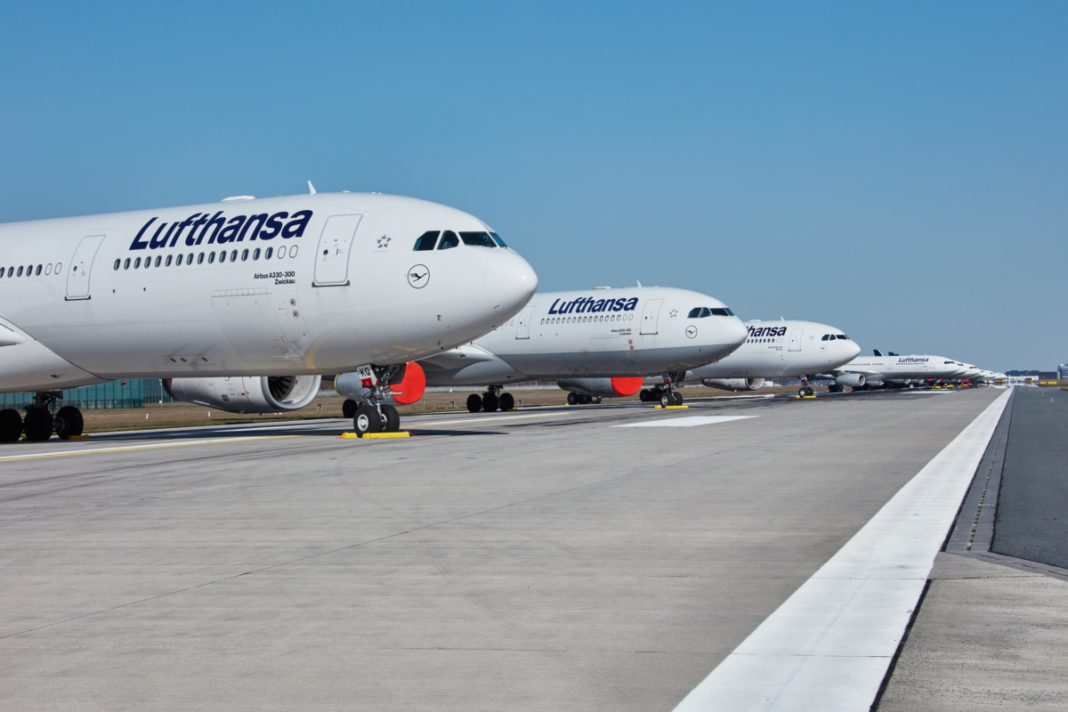Lufthansa has been adapting to the challenges thrown at it by the COVID-19 pandemic. By changing procedures, and increasing digitization, the airline is ensuring that it gets its network up and running again as safely and efficiently as possible.

A year ago, nobody would have foreseen that the aerospace industry would be struggling as it is today. However, thankfully things are on the up again following a catastrophic April. Lufthansa, an airline that took a big hit from the crisis, is slowly rebuilding its network following relaxing government restriction, in addition to steadily building demand.
90% of short and medium-haul by October
At an event hosted by Lufthansa and attended by Simple Flying, the airline’s CEO of the Frankfurt Hub, Klaus Froese, mentioned that rebuilding the network is well underway. He pointed out that the airline aims to serve 90% of its short-and-mid-haul network by October, alongside 70% of its long-haul network. Of course, frequencies will be lower as demand remains low.
Stay informed: Sign up for our daily aviation news digest.
Froese said that it was essential to offer a network with as many connections as possible. However, he warned that reintroducing capacity too quickly would not be ideal.

Safety is number one
Of course, as is the case at many airlines, safety is a top priority for Lufthansa, alongside the Lufthansa Group. Lufthansa has taken a very active approach with COVID-19, aiming to adapt to the challenges thrown at it. For example, the German flag carrier was one of the first to introduce mandatory masks on flights, a policy which is has seen no resistance to.
Dr. Bjoern Becker, Senior Director Product Management Ground & Digital Services Lufthansa Group, added to this, pointing out that increased digitization was already a priority for the Lufthansa Group before the current pandemic.
He pointed out that Lufthansa has been working closely with German airports to make the travel experience as smooth and consistent as possible. For example, the airline is working to ensure that every passenger can access hand sanitizer at security. Through its network of station managers, the airline is also looking to work with international airports along the same themes.

Every offer and service outside of the aircraft can now also be completed on a mobile phone, from accessing a boarding card to even producing your luggage labels through print at home labels, or smart bag tags.
Also, the onboard offering has been adapted for the current situation. This has, unfortunately, seen some downsides such as the removal of catering on shorter flights. However, it has also seen procedures changed. Passengers are offered a disinfection wipe upon boarding to wipe their hands or seat area.
Additionally, where possible, the airline is boarding the economy cabin in the order: window seats, middle seats, aisle seats. Passengers are also asked to remain seated upon arrival and leave the aircraft in blocks of 3-5 rows depending on the load factor. Cabin crew present jokingly remarked that they want these processes to stay as they’ve sped up boarding and disembarkation.

Unique selling point
Froese went on to point out that safety in aviation has always been the top priority. 45 years ago, it led to making sure the aircraft were safer. Then, following 9/11, the focus was on passenger safety, and now, the focus is on passenger health.
Lufthansa has a somewhat unique selling point, in that it offers all passengers the possibility of undertaking a COVID-19 test when passing through Frankfurt Airport. Some passengers are even now eligible to take the test free of charge if traveling from a high-risk country. The testing center has so far tested over 40,000 individuals. It was screening 2,000 passengers a day before mandatory testing of passengers from high-risk countries was introduced today.
Have you flown with Lufthansa since the new changes came in? What did you think? Let us know your thoughts in the comments!
[ad_2]
Source link



